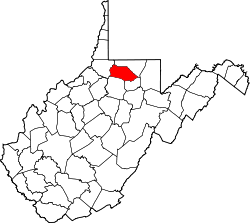Montana Mines | |
|---|---|
| Coordinates: 39°31′37″N80°6′32″W / 39.52694°N 80.10889°W | |
| Country | United States |
| State | West Virginia |
| County | Marion |
| Elevation | 994 ft (303 m) |
| Time zone | UTC-5 (Eastern (EST)) |
| • Summer (DST) | UTC-4 (EDT) |
| ZIP codes | 26586 |
| FIPS code | 1549700 [1] |
Montana Mines is an unincorporated community located in Marion County, West Virginia, United States. It is part of Marion County in Fairmont. [2]



